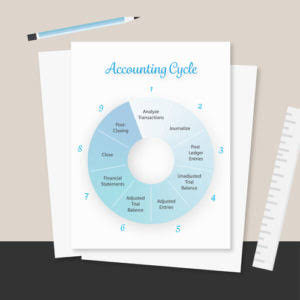
Holders of common stock elect the corporation’s directors and share in the distribution of profits of the company via dividends. If the corporation were to liquidate, the secured lenders would be paid first, followed by unsecured lenders, preferred stockholders (if any), and lastly the common stockholders. A lender or supplier who is owed money but does not have a lien on any of the assets of the company that owes the money.
- At Financopedia, we’re committed to assisting small businesses and individuals with their finances and taxes.
- Naturally, cash is the most liquid asset, whereas real estate and land are the least liquid asset, as they can take weeks, months, or even years to sell.
- As you can see, working capital is an amount even though it is usually discussed as part of financial ratios.
- Understanding the correct order of assets for your balance sheet can help you accurately report the financial status of your business.
- For example, a company with a preapproved line of credit that can be used when needed allows the company to operate with a smaller amount of working capital.
- The items last in order of liquidity are things like real estate and other assets that can take a long time to convert to cash.
Current Cash Debt Coverage Ratio
For example, if a person wants a $1,000 refrigerator, cash is the asset that can most easily be used to obtain it. If that person has no cash but a rare book collection that has been appraised at $1,000, they are unlikely to find someone willing to trade the refrigerator for their collection. Instead, they will have to sell the collection and use the cash to purchase the refrigerator. Legal protections granted to original creative works like books, songs, films, software, etc. Copyrights can be sold or licensed but generally do not directly convert to cash. Next, let’s look at examples of order of liquidity specific assets within each classification along with their relative liquidity.
Or login using your account

Current assets are listed first, arranged in order of liquidity—how quickly they can be converted into cash. Moreover, liquidity enhances market efficiency by supporting price discovery mechanisms. In liquid markets, the bid-ask spread tends to be narrow, reflecting the availability of buyers and sellers and minimizing the impact of individual trades on asset prices.

Operating cash flow ratio

Non-current assets are listed next because they are not as easily converted to cash. The order of unearned revenue liquidity is the order in which assets are listed on a balance sheet, starting with the most liquid assets and ending with the least liquid assets. This standard arrangement allows external parties like creditors and investors to easily measure a company’s liquidity.
Changes in Other Current Assets
- It is deferred to the next accounting period by crediting a liability account such as Unearned Revenues.
- A contra revenue account that reports the discounts allowed by the seller if the customer pays the amount owed within a specified time period.
- The key distinction in the cash vs. liquidity conversation is that cash is just one part of a broader liquidity picture.
- When a customer uses a business credit card, the customer will be given 27 to 57 days in which to pay the credit card company.
- The order of liquidity directly impacts a company’s financial health by influencing its ability to manage liquidity needs, withstand market shocks, and maintain operational stability.
- Unfortunately, the cost of inventory reported on the balance sheet pertains to the final moment of the accounting year, while the cost of goods sold is the cumulative amount for the entire accounting year.
By recognizing the liquidity hierarchy of assets, investors can tailor their portfolios to align with their liquidity preferences, investment horizon, and risk tolerance. Further down the order of liquidity are assets such as real estate, private equity investments, Bookkeeping vs. Accounting and certain types of bonds that may have limited trading activity or longer settlement periods. These assets are characterized by lower liquidity, as their conversion into cash may entail longer timeframes, transaction complexities, or the need to find suitable buyers or counterparties. One way to measure a firm’s ability to meet its short-term obligations with its liquid assets. You can convert Liquid assets to cash easily, such as cash itself, accounts receivable, and marketable securities.
